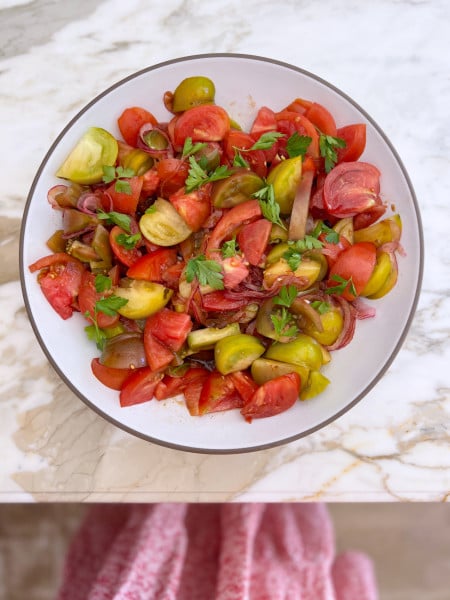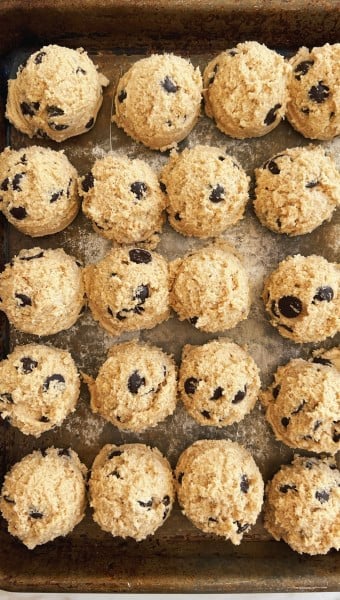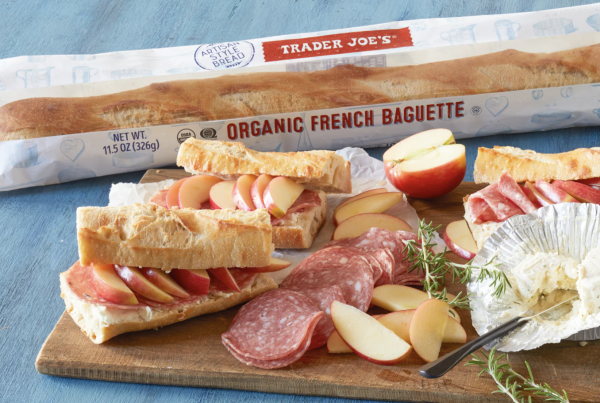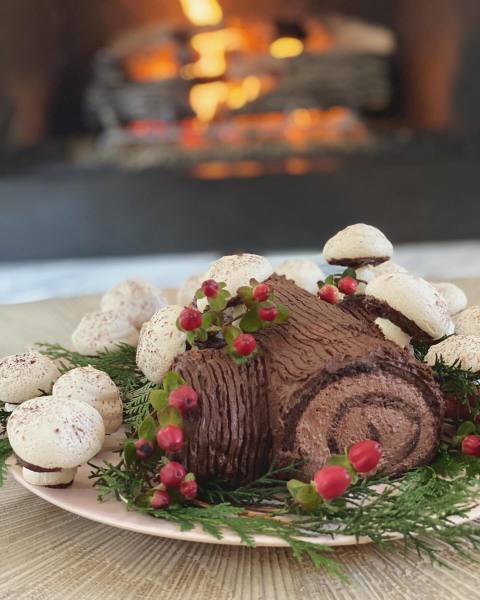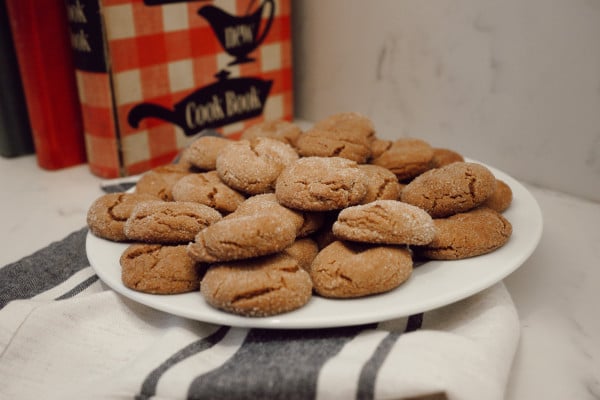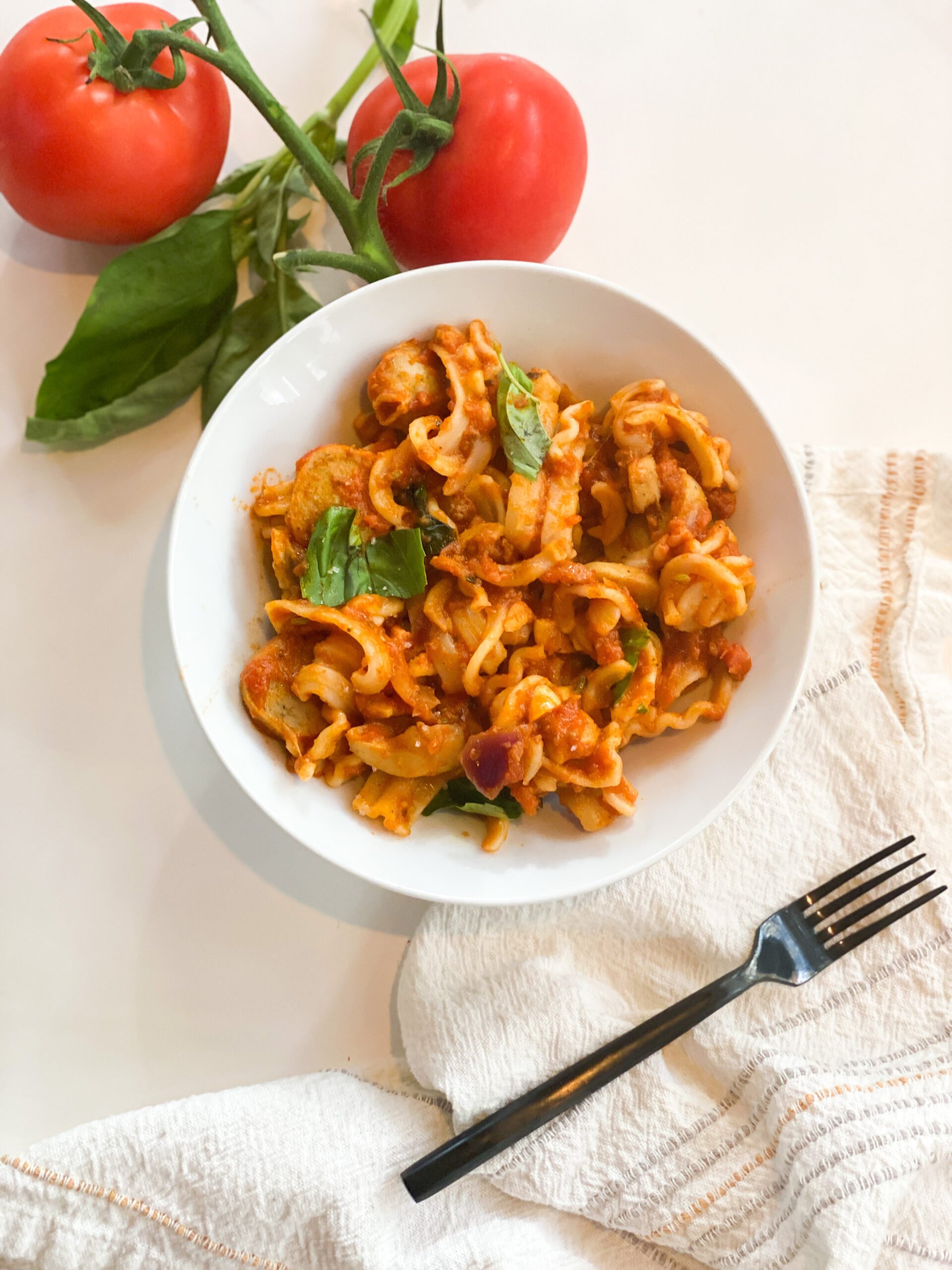
Have you ever sat and read a cookbook cover-to-cover? While I don’t do it as often as I’d like to, it’s a habit I’ve maintained from my last job, since they’ll often reveal information and tips you wouldn’t have caught simply scanning a recipe for instructions. Some of the information has nothing to do with cooking—it can be a peek into the inner workings of a restaurant, how to travel well, how to raise an adorable family in Medoc, France and still look good doing it—but most cookbooks are chock-full of hyper-specific cooking tips. Some of the tips below are completely random, while others could apply to nearly any meal. Read on for some of the best cooking tips I’ve learned from cookbooks:

While I’ve used the tip for keeping Parmesan rinds to use in vegetable stock, I never considered using them to flavor cooked pasta, until recently coming across this recipe. The editor writes, “Claudia customizes this dish with whatever ingredients she happens to have on hand. Add fresh basil leaves to the oil in the beginning or toss a Parmigiano-Reggiano rind in with the pasta while it’s cooking. (Be sure to remove the leaves and/or the rind before serving).”
Shop the cookbook here.

I learned this tip while recipe-testing a portion of this cookbook and it’s one of my favorite ways to boost a salad, or really any dish with roast vegetables. To make Merrill’s lemon cream, combine 12 ounces soft goat cheese, 1 cup creme fraîche, ¼ cup preserved lemon, and kosher salt. Then, as she writes “Smear about 2 tablespoons of the lemon cream in the center of each plate and mound with some salad on top.” As you eat your salad, drag each bite through the cream—it’s delicious.
Shop the cookbook here.

During the summer, all I want to do is roast vegetables—sweet tomatoes with nothing but garlic and olive oil, zucchini, eggplant. The only issue is that, while I love bitter-tasting vegetables (I’d include radicchio in my last meal), my boyfriend doesn’t feel the same way, which is why I loved this tip when I came across it. Mimi writes, after cutting the eggplant into thin rounds, “Put the eggplant in a colander set in the sink, sprinkle with the coarse salt, and let sit for 20 minutes. This will help extract some of the bitterness from the eggplant. Bring 2 cups water to a boil. Pour over the eggplant to rinse and let drain, then gently pat dry with a paper towel.” After that, you can bake it according to whatever recipe’s instructions.
Shop the cookbook here.

Erin McDowell is, like the title of her cookbook suggests, fearless—which to me means, she’s willing to test and retest techniques until she completely understands the chemistry of whatever she’s set out to bake. She writes, “To help the cookies stay flat and ensure maximum crispness, bang the baking sheets lightly on the racks when you rotate them. For chewier cookies, she has a tip, too: “The key to the chewiness of these cookies is the high ratio of brown sugar, which contributes more moisture than granulated sugar.” (Those are on page 32 of her book and they are good.)
Shop the cookbook here.

The Zuni Café Cookbook is written like a novel (downside: There are almost no photos; upside: It’s written so beautifully, you won’t care.), and the section about making salads is essentially a love letter to leafy greens, full of gems about lettuce (see what I did there?). It reiterated to me the importance of preserving the flavors of lettuce as much as possible—since salads are the truest reflection of seasonal ingredients, you want to make sure you’re taking every step to capture the vegetables’ flavors, starting with the greens. Just like if you drop a plum, bruising lettuce leaves can dull the flavor. After selecting leaves that aren’t a rusty-brown at the end (a sign they were “harvested more than a few days ago”), keep them intact by dunking them into a bowl of cold water. “Don’t run the faucet at full board on the leaves,” Rodgers writes, “As that can bruise the leaves.” She adds, “Spin-dry in small batches, so you don’t crush the tender leaves—bruising will damage the flavor.” It may sound like a small tip, but I promise you’ll notice a difference with fresh lettuce.
I’ll also leave this here, just because I love it: “As you are tempted to vary or embellish them, remember it’s best to keep salad uncomplicated—which usually means keep the number of ingredients limited to just a few thoughtfully matched elements. A harmony of leaf, nut, cheese, and a particular vinegar can become a garbled mess when a few extra, well-meaning ingredients weight them down. Save them.“
Shop the cookbook here.

If Ina says it’s okay, then it’s okay, right? She writes, “Puff pastry is the essence of sophisticated French cooking, and it makes any filling elegant,” which she immediately follows-up with, “Fortunately, Pepperidge Farm makes an excellent one that you can find in the freezer at your grocery store.” Consider this your Ina Permission Slip to cut some corners on the laminated pastry, and give yourself a break.
Shop the cookbook here.

Working for Kristen for nearly two years at Food52, this tip is the last one I would expect of her—she taught me to never stray from adding butter to any dish (I usually use roughly double the called-for amount which may be overkill), but she’s quick to correct the naysayers: “It sounds like one of the more joyless weight-loss tricks—and if you’re catering to that crowd, this will play well—but it doesn’t come from a place of deprivation.” Instead, she writes, “The starch released from a tiny amount of rice amps of richness (think of risotto), while ensuring that none of the flavor is obscured. Michel Guérard adds rice to his root vegetable purées, cooking it along with the vegetables in milk before blending. Arborio rice makes Marcella Hazan’s smothered cabbage soup feel almost extravagant. And in Paula Wolfert’s leeks simmered in olive oil, she adds a tablespoon of rice halfway through, calling the dish ‘Mediterranean alchemy.’”
Shop the cookbook here.

Gabrielle Hamilton writes in her memoir, Blood, Bones, and Butter, about a sandwich her ex-husband prepared for her during their courtship. On a beach in New York, he handed her roll of ciabatta, with arugula, prosciutto, and “olive oil from his own orchards in Puglia.” Sounds ideal, right? Wrong. She writes, “I sat eating my sandwich, deep in my coat and sweater, thinking the oil tasted very good, buttery, and acidic at the same time, but wishing there was more meat and maybe a smear of cool waxy butter also. I love the perfection of three fats together—butter, olive oil, and the white fat from prosciutto or lardo.” She tells him, “These could use one more slice of meat, maybe… And maybe a little sweet butter.” Like her ex-husband, who began making his sandwiches the same way every since, I followed suit. My favorite sandwich is a baguette with enough soft butter that you can really taste it, smeared on as if it were mayonnaise (I’m talking a quarter to half a stick), olive oil, and either prosciutto or mozzarella and lots of salt, maybe some honey. That’s really all you need for a terrific sandwich!
Shop the cookbook here.
P.S., Browse my all-time favorite cookbooks here!
